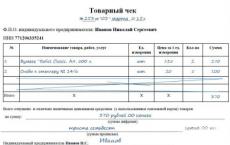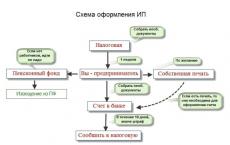Power line supports. Typical projects of power transmission line supports General description of design solutions
When laying overhead power lines, in addition to choosing a cable, it is also necessary to select the supports on which it will be fixed, as well as insulators. We will devote this article to the supports of overhead power lines.
For the construction of overhead lines, metal, reinforced concrete and wooden, as they are often called in everyday life, electrical poles are used.
wooden supports
They are made, as a rule, from pine logs with the bark removed. For power lines with a supply voltage of up to 1000 V, other tree species are also allowed, for example, fir, oak, cedar, spruce, larch. Logs, which will subsequently have to become the supports of power lines, must meet certain technical requirements. The natural taper of the trunk, in other words, the change in its diameter from the thick lower end (butt) to the upper cut should not exceed 8 mm per 1 meter of log length. The diameter of the log on the upper cut for lines with voltage up to 1000 V is taken to be at least 12 cm, for lines with voltage above 1000 V, but not more than 35 kV - 16 cm, and for lines with higher voltage - at least 18 cm.
Wooden poles can be used for the construction of overhead lines with a voltage not exceeding 110 kV inclusive. Wooden poles are most widely used in overhead lines with voltage up to 1000 V, as well as in communication lines. The advantage of wooden poles is their relatively low cost and ease of manufacture. However, there is a minus, a significant minus - they are subject to decay and the service life of pine supports is about 4-5 years. To protect wood from decay, it is impregnated with special antiseptics against decay, such as anthracene or creosote oil. Especially careful processing lends itself to those parts that will be dug into the ground, as well as cutting ends, braces and traverses. Thanks to antiseptics, the service life is increased by about 2-3 times. For the same purpose, quite often the legs of a wooden electric pole are made of two parts - the main stand and the chair (stepson):
Where - 1) the main stand, and 2) a chair (stepson)
With a strong decay of the lower part, it is enough to change only the stepson.
Metal supports
Plus - durable and reliable in operation. Minus - a large consumption of metal is required, which entails a significant increase in cost (in comparison with wooden ones). Metal poles of overhead power lines are used, as a rule, at voltages from 110 kV, since the operation of metal poles is caused by high costs for performing very labor-intensive and expensive work on periodic painting that protects against corrosion.

Reinforced concrete supports
In the industrial manufacturing process, they are the best option for overhead lines both up to 1000 V and above 1000 V. The use of reinforced concrete supports dramatically reduces operating costs, since they practically do not require repair. At present, almost everywhere, in the construction of overhead lines of 6-10 kV and up to 110 kV, reinforced concrete supports are used. They are especially widespread in urban networks up to and above 1000 V. Reinforced concrete supports can be made both monolithic (cast) and in the form of assemblies that are assembled directly at the installation site. Their strength depends on the method of concrete compaction, of which there are two - centrifugation and vibration. When using the centrifugation method, a good concrete density is obtained, which subsequently has a good effect on the finished product.

On overhead power lines, special, anchor, corner, end, intermediate supports are used.
Their purpose is to rigidly fasten wires and lines to them. Places for their installation are determined by the project. By design, the anchor support must be strong, since if the wire breaks on one side, it must withstand the mechanical load of the wires on the other side of the line.

Anchor spans are the distance between anchor supports. On straight sections (depending on the cross section of the wires), anchor spans have a length of up to 10 km.
intermediate supports
They serve only to support wires on straight sections of the line between the anchor supports. Of the total number of electrical poles installed on the line, intermediate ones occupy about 80-90%.
Angle supports
Are intended for installation in places of turn of a route of a power line. If the angle of rotation of the line is up to 20 0, then the electric pole can be made as an intermediate one, and if the angle is about 20-90 0, then as an anchor.

They have an anchor type and are installed at the beginning and at the end of the lines. If in anchor electric poles the force of one-sided tension of wires can occur only in emergency, when the wire breaks, then it always acts in the end electrical supports.

Special supports
They are electrical poles of increased height and are used at the intersection of power lines of power lines with highways and railways, rivers, crossing between power lines themselves and in other cases when standard height the electric support is not enough to provide the necessary distance to the wires. Intermediate electrical supports of lines with voltage up to 10 kV are single-column (candle-shaped). In low-voltage networks, single-column supports perform the functions of corner or end supports, and are additionally equipped with guy wires attached to the side opposite to the wire tension, or with struts (supports) that are installed on the side of the wire tension:

For lines with a voltage of 6-10 kV, electrical poles are A-shaped:

Air lines and main dimensions and dimensions are also characterized.
Overhead line gauge - the vertical distance from the lowest point of the wire to land or water.
The sag is the distance between an imaginary straight line between the wire attachment points on the support and the lowest point of the wire in the span:

All dimensions of power lines are strictly regulated by the PUE and directly depend on the magnitude of the supply voltage, as well as the terrain along which the route passes.
The PUE also regulates other dimensions when crossing and approaching power lines, both among themselves and between communication lines, highways and railways, air pipelines, cable cars.
To check the designed power line requirements of the PUE calculations are made for mechanical strength, the methods of which are given in special courses of electrical networks.
A complete list of overhead line supports presented on our website can be found on the tabs below. First select the material from which the support is made, and then the voltage rating of the line. After that, go to the page with a list of overhead lines. Please note that the list of supports is constantly updated.
Power transmission line supports are perhaps one of the most complex elements of power transmission lines. When designing and building these structures, it is necessary to take into account both climatic and soil characteristics of the area. Currently, manufacturers of supports are striving to reduce the cost of production and increase the strength characteristics of products.
In view of this, various designs are being developed to reduce the load on the foundation and ensure stable operation in various operating modes.
On our site you can get acquainted with both old and new developments of Russian engineers.
Classification by purpose
Each brand of supports is designed to perform its specific function. That is why designs are divided into main types depending on the purpose:
- intermediate supports- the most common type of supports, designed for vertical loads from the weight of the wires, installed only on straight sections of the line;
- anchor supports- also installed on straight sections of the route, however, the wires are anchored to them. Thus, the supports are designed for longitudinal loads from the tension of the wires;
- corner supports- installed at the corners of the track. The fastening of wires on them is also in most cases anchored, however, there are exceptions in the form of intermediate corner supports;
- end supports- are usually mounted in front of substations. Loads act on them mainly from one side of the line;
- transpositional- designed to perform the transposition of overhead lines;
- branch- are installed in places of branches of the line to an adjacent direction;
- transitional- to ensure clearance over an engineering structure or a natural barrier.
Classification by materials of manufacture
Structures are installed in various climatic, geoseismic conditions. At the same time, it should be noted that many types of supports are designed for operation in urban areas. Thus, in each case, it is required to use a suitable material for the manufacture of racks.
wooden supports
Wooden power transmission poles are widespread in rural areas, but do not forget that the corresponding wooden structures are also used on lines up to 220kV.

Wooden structures are most often used on low voltage lines, while they have a number of advantages:
- relative durability (up to 50 years with appropriate impregnation);
- light weight;
- ease of construction and transportation;
- low cost.
Reinforced concrete supports
Reinforced concrete supports are installed on lines with a voltage of less than 500 kV. Basically, these are intermediate supports that do not take on the load from the tension of wires and cables. In the case of using reinforced concrete racks as anchor supports, they are strengthened with slopes or braces.

Reinforced concrete supports are made from prestressed reinforced concrete and have a number of advantages:
- simple design features;
- do not require complex additional assembly;
- not subject to decay, like wooden supports;
- in some cases, installation directly into the ground is possible;
- relatively simple line construction.
Steel supports
Steel supports on 0.4-10 kV lines are extremely rare. Their prerogative is the lines of medium voltage and above. Metal poles are mainly used as anchor poles, however, with a network voltage of more than 110 kV, intermediate steel poles are also used.

Structures can be made both from a profile and corners, and by rolling, since metal supports based on pipes are often used in lighting. Among the advantages of supports of this type, one can note their wear resistance and durability, as well as the possibility of manufacturing very high structures to ensure safe passage through engineering structures and natural barriers.
Typical designs are presented for each type of support. As a result, you will be confident in your choice, as you will familiarize yourself with all the necessary documentation.
VL-6kV. Project 2013 Double/single chain. AS, SIP. Racks for 10 and 35 kV. Passed all approvals in IDGC, SSK, Russian Railways. More or less normal.
general description design decisions
For power supply to consumers of the compressor station at the Gorbatovskoye field, the project provides for:
Construction of a single-circuit overhead line-6kV, made on racks SV105-5 from switchgear-6kV of the substation 35 / 6kV "Gorbatovskaya-2", then transition to a double-circuit overhead line-6kV, made on racks SK-22.1-1.1 with power supply of the second line from the support of the additional support of the installed between support 86 and 87 of feeder 5 to ZRU-6kV (with package transformer substation) at the compressor station site.
Branch device from feeder 5 "Gorbatovskaya-1"
The AC95/16 wire is suspended on the projected single-circuit VL-6 kV. Permissible voltage in the wire is st=svg=64MPa ssg=45MPa.
The project adopted reinforced concrete supports according to a standard design 3.407.1-143 developed by the Selenergoproekt Institute.
The supports are made on the basis of racks SV105-5-IVA (TU5863-007-00113557-94) according to the standard project Arch.N LEP00.10.
The suspension of the double-circuit line is provided using intermediate supports PB35-4.1 according to the standard design 3.407.1-164 on reinforced concrete struts SK22.1-1.1 and angle-angle steel U35-2 according to the standard design 5736tm. At the intersections of a double-circuit line, supports PB110-8 are used according to a standard project 3082tm on racks SK26.1-6.1
Part of the line is carried out with SIP wire according to the L56-97 standard project using SV105-5-IVA racks.
At intersections with engineering communications, supports PS10-2, PP10-5 are used.
P.S. I did it a long time ago, so there may be kosyachki. But overall a good project. Yes, if something is not clear - write, I will help as much as I have free time.



